Last updated: September 18, 2020
Article
Conifer Identification at Acadia
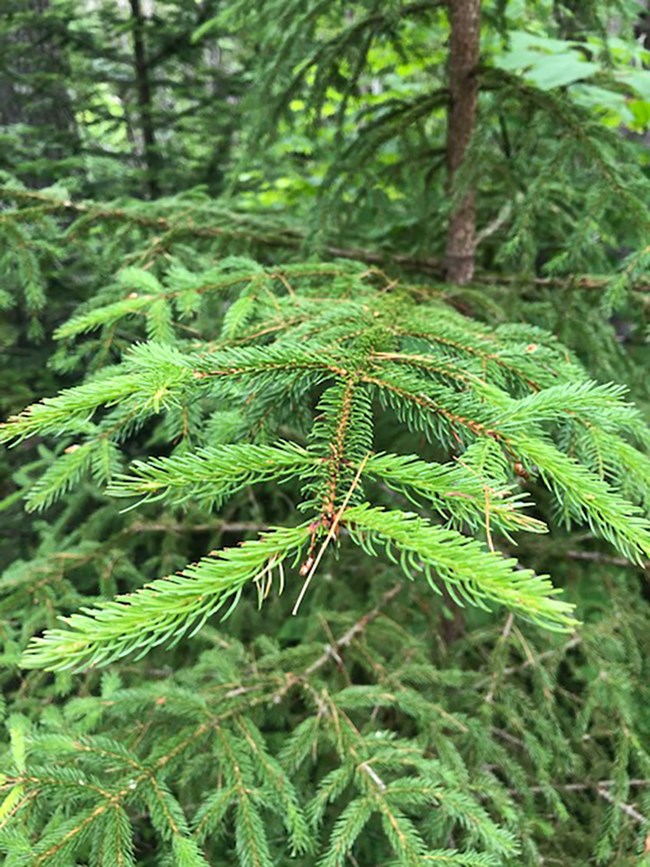
NPS Photo
One of the most beautiful and enduring sights in a national park is the variety of trees we see. Acadia is no exception! Majestic conifers such as the White Pine to the fragrant Balsam Fir and the ever present Red Spruce dominate the landscape.
What is a Conifer?
A conifer is a cone bearing tree and is also called a softwood. We see these trees regularly with their distinctive pine needles and the cones that fall to our feet. Three types of conifers found in Acadia are spruce, pine and fir.
Basic Features
How can you tell the difference? Conifers can be identified by the needles, cones and sometimes the color of the bark.
Pine needles are in groups of 2, 3 or 5 and are longer than spruce and fir needles.
Spruce needles are single needles emanating around the branch and have four sides. Because of the four sided structure they can be easily rolled between your fingers. Normally they feel spikey to the touch.
Fir needles also have single needles that stick out directly from the branch, feel flat and don’t roll easily in your fingers.
White Pine
White Pine is the official state tree of Maine. It is a popular wood for general building needs and masts for boats. It is found in many types of soils and locations throughout Acadia.

NPS Photos
The following are how to visually identify a White Pine:
- Trees can grow between 70 to 100 feet tall.
-
Needles are 3 to 5 inches long, found in clusters of 5, flexible, and a bluish-green color.
-
Cones are 4 to 8 inches in length.
- Bark on young trees is green with a reddish tinge. Old trees have dark, broad flat ridges with long creases.
Red Spruce
Red Spruce is a popular wood for pulp (paper products) and strong construction material. The name is from the reddish color of the bark. The species is found all over in Acadia in abundance.
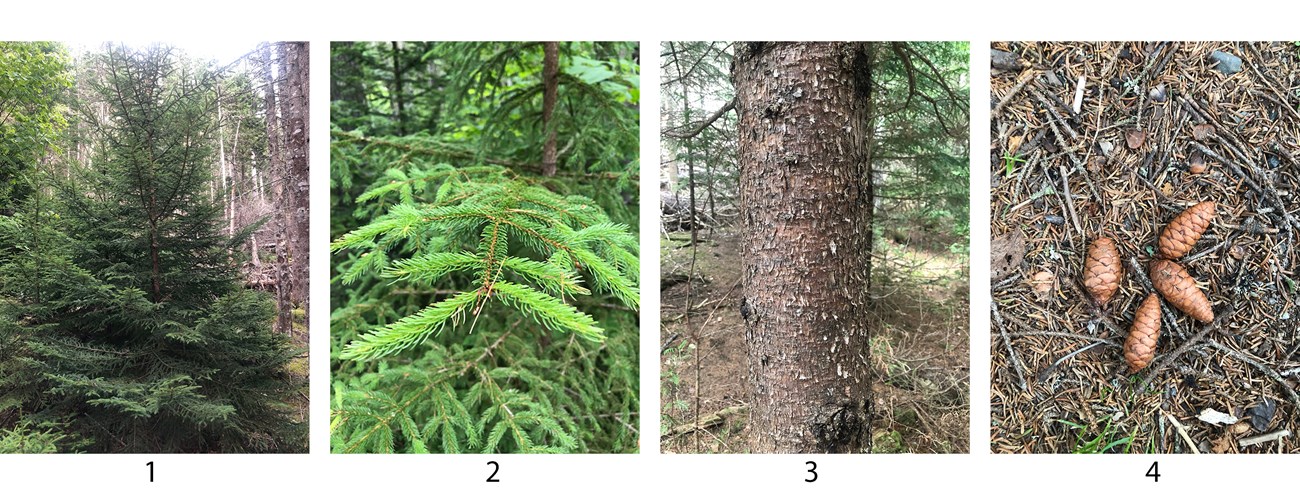
NPS Photos
Red Spruce have certain distinct features:
- Red Spruce tree can grow 60 to 80 feet tall.
- Needles: 1/2 to 5/8 inches long, single needles stick out around branch, lighter yellow green on young trees, dark yellow green on older trees.
- Cones: 1 1/4 to 2 inches long.
- Bark: Thin, reddish/brown scales
Balsam Fir
Balsam Fir are popular as Christmas or holiday trees for their strong pine scent and pleasing shape. They are also used for paper pulp and light construction. These trees are found in damp woods and well-drained hillsides all over Acadia.
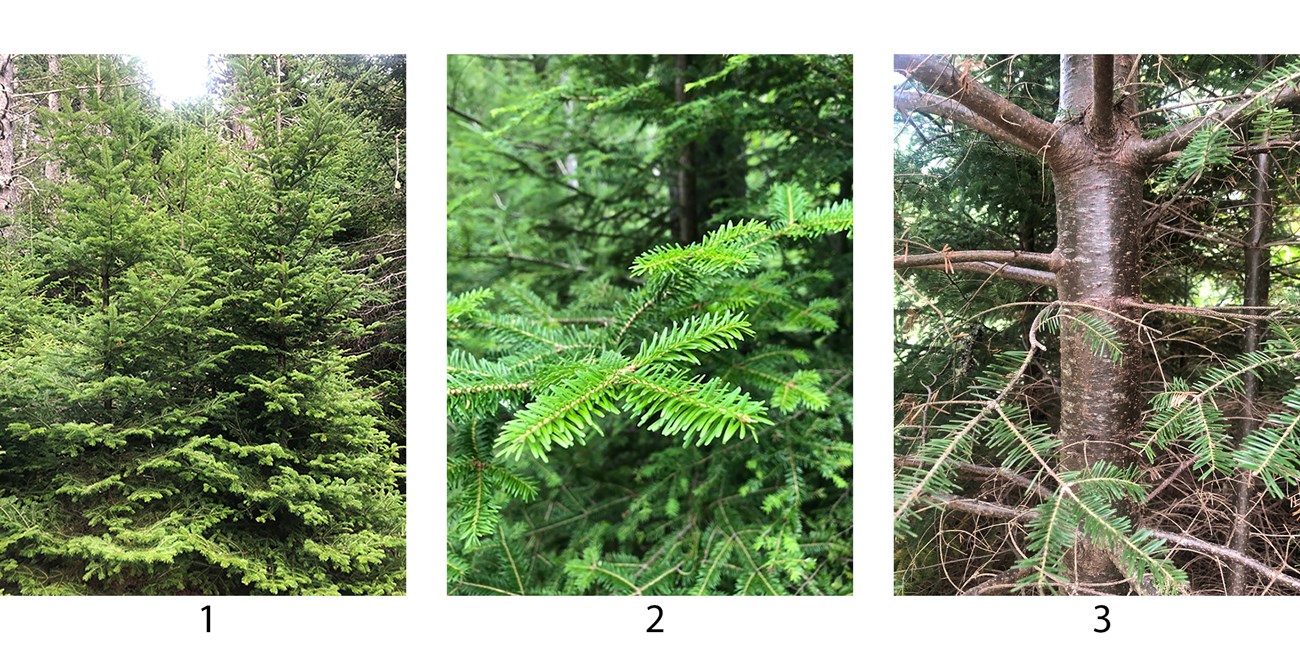
NPS Photos
- Tree can grow from 60 to 70 feet tall.
- Needles: 1 inch long, single needles on branches with a dark green color. Needles on younger trees appear flat and on older trees mostly curved around the top side of branch. Needles also have two white stripes on underside.
- Cones: 2 to 4 inches long.
- Bark: Brown, smooth with blisters on young trees.
Pitch Pine
Pitch Pine are named after a past use of the tree sap to create turpentine and pitch to coat wooden ships as a preservative. Today they are used as paper pulp, lumber and “fat wood” kindling for fire starting. The sap is used in soap, paint, and varnish. They can grow up to 40 feet, but are usually less than ten feet in Acadia and can be found on mountain ridges. Good locations to find them are Cadillac Mountain and Champlain Mountain.
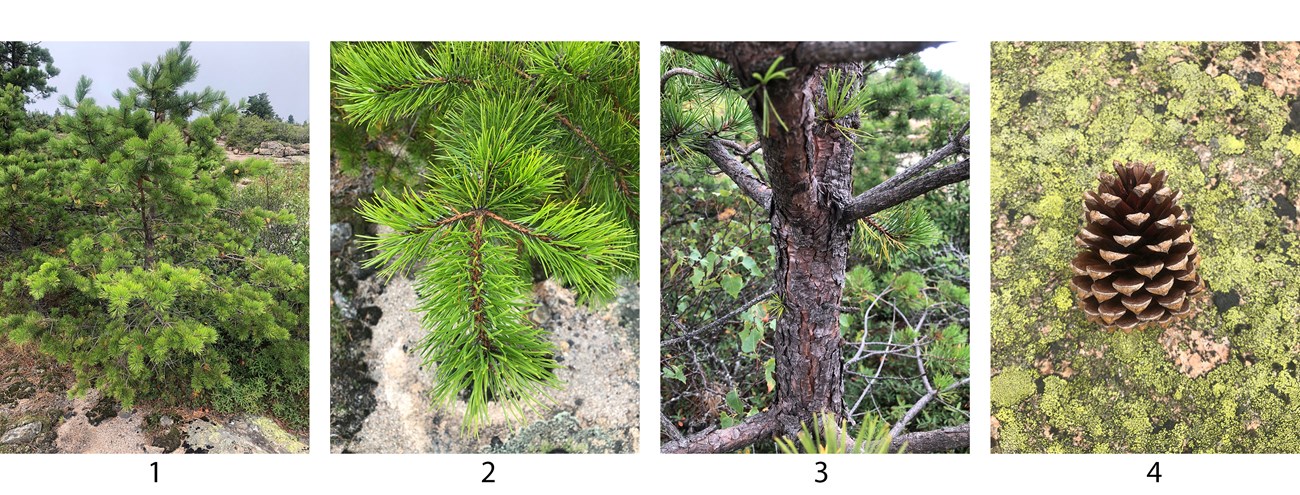
NPS Photos
- Trees can be up to 40 feet. They are usually under ten feet in Acadia and can appear bush-like.
- Needles: 3 - 5 inches long, cluster of 3, dark yellow-green, stiff, thick and sharp on the end. Needles often grow out of the trunk.
- Cones: 1 1/2 to 3 1/2 inches long.
- Bark: Scales of reddish brown to gray.
Jack Pine
Jack Pine are also called Grey Pine and usually located in sandy, rocky areas. The best place to find them in Acadia is on Schoodic Peninsula. Jack Pine cones are serotinous, which means they need fire to open up and shed their seeds. The cones stay on tree branches for 12 to 15 years unlike cones of other trees that stay on the branches for up to a few years. Its primary use is for pulp.
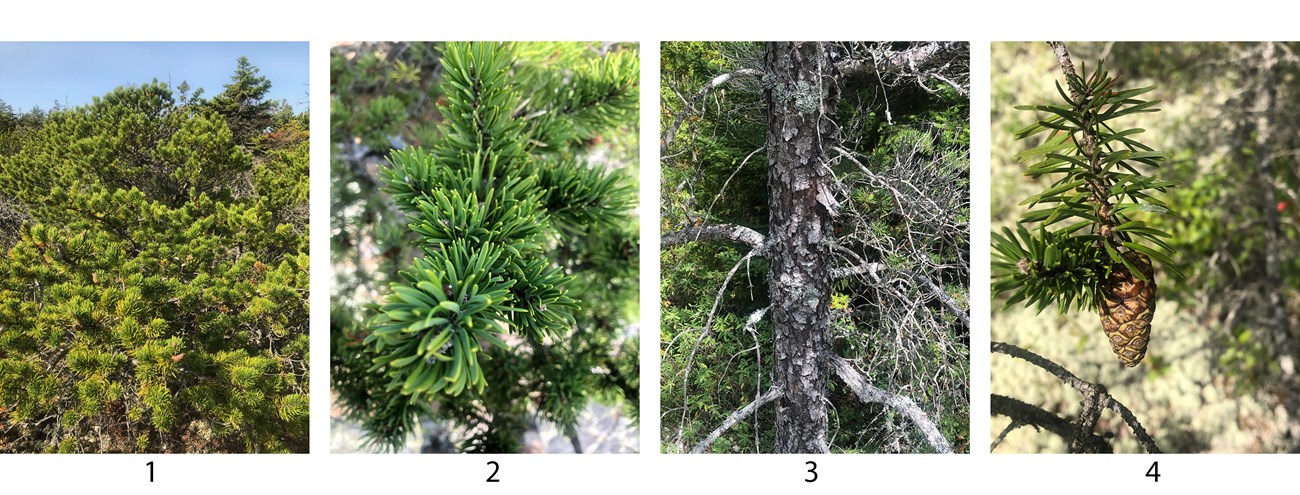
NPS Photo
- At maturity this tree can reach 50-60 feet, however in coastal regions they are shorter and knarled.
- Needles: 3/4 to 1 1/2 inches long, cluster of 2, yellow-green in younger trees, dark green in older trees, flat and twisted at base.
- Cones: 1 1/2 to 2 inches long, slender, curved and lack a stalk.
- Bark: Thin and irregular, dark brown or grey with tinge of red.
